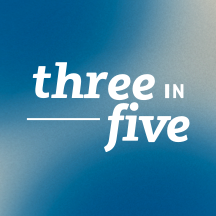Explore institutional insights

Client sign in
- Please enter a search term.
-
Insights
Stay up to date

Market update

Investor insights
-
Investments
Stay up to date

Market update

Investor insights
-
About us
Stay up to date
Learn more about our investment group

Market update

Investor insights
- Please enter a search term.
- Investments
-
Insights
- Back
- Insights
- Insights Overview
-
All insights
- Back
- All insights Overview
- Q3 2021: Investment grade private credit update
- Evaluating private credit opportunities in today’s market
- 2022 BentallGreenOak Perspective report
- The case for real estate
- The Impact of Rising Rates – LDI Client Update
- Global Investment Outlook 2022
- Investing in an inflationary environment
- Q2 2022: Investment grade private credit update
- Regulatory Update - Schedule D Part 1 (Bonds)
- Q3 2022 Investment Grade Private Credit Market Update
- Crescent Capital Markets Q3 2022 Update
- Multi-Asset Credit Strategy: October 2022 Update
- Investing into the rate-hiking cycle
- Multi-Asset Credit Strategy: November 2022 Update
- Multi-Asset Credit Strategy: December 2022 Update
- 2023 Global Investment Outlook
- Q4 2022: Investment Grade Private Credit update
- Multi-Asset Credit Strategy: January 2023 Update
- Fireside chat: Seize new opportunities in bonds and structured credit
- Q1 2023: Investment Grade Private Credit update
- Q1 2023: Crescent Capital group market commentary
- Crescent experts Q&A: How innovation will drive private debt forward
- June 2023: Private Credit Insights
- The BMA’s upcoming regulatory review
- The Elusive Recession - Commentary by Crescent Capital Markets
- 2023 Mid-year Global Investment Outlook
- Commercial mortgage-backed securities are in the spotlight again, but this isn't 2008
- Q2 2023: Investment Grade Private Credit update
- Cautious optimism
- Q3 2023: Investment Grade Private Credit update
- Narrowly syndicated credit: yield opportunities in an underexplored niche
- Don't rest yet, the recession will rear its head in 2024. Here's how to protect your bond portfolios
- 2024 Global Investment Outlook
- Q4 2023: Investment Grade Private Credit update
- Looking under the hood at below-IG fixed income
- Q1 2024: Investment Grade Private Credit update
- Global insurance group
- Retirement plan solutions
- Sustainable Investing
- Market updates
-
Three in Five Podcast
- Back
- Three in Five Podcast Overview
- Mark Attanasio on the changing landscape of private credit
- James Slotnick on the U.S. midterm elections
- James Slotnick on the 2022 U.S. midterm elections
- Andrew and John on commonalities in investment grade private credit and narrowly syndicated bank loans
- Laila on operational considerations for investment grade private credit investors
- Cliff Corso on opportunity in the high net worth market
- Kate McKeon on sustainable investing and Net Zero
- Ben Greene on education, allyship, and the trans experience
- Melissa on the importance of the client experience
- Cristina Medina on Invest in Girls
- Steve on the Canadian P&C insurance market
- Rich and Peter on growing stress in the banking sector
- Doug on the debt ceiling
- Jim Blakemore on real estate debt
- Chris and Tim on the Special Financial Assistance Program for Taft Hartley plans
- Veronique on the evolution of LDI investing in Canada
- Chris Wright on the future of private credit
- Beth Brown on workplace burnout
- D.J. on the CMBS market
- Josh Davis on inner mastery and effective leadership
- James Slotnick on the politics of raising the U.S. debt ceiling
- Kevin Quinlan on climate change as a material investment risk
- Steve Peacher on the 10-year anniversary of SLC Management
- David Hamlin on fundamental credit research
- Michael Schnitman on alternatives in the high net worth space
- Steve Peacher reflects on challenges and milestones in 2023
- Subscribe
- About us
- Careers
- Contact us
- Newsroom
- Thank you
- U.S. | EN

Welcome!
Please select your country and language below:
Episode 68
OCTOBER 12, 2022
Mark Attanasio on the changing landscape of private credit
Mark Attanasio, Co-Founder and Managing Partner of Crescent Capital Group LP, discusses how the private lending market has changed over the years and where it might be going next.
Steve Peacher: Hi, Everybody Thank you for listening to this episode of “Three in Five.” This is Steve Peacher, President of SLC Management. And again, I'm really excited to be joined by Mark Attanasio, who's a co-founder of Crescent Capital, I think, as everybody knows. And Mark, thanks for taking a couple minutes today. Last time we spoke on one of these Three in Five’s, I think we spoke a lot about baseball, but today I want to talk about the credit markets, and obviously Crescent Capital was founded in 1991. So a pioneer in the credit markets. And before that you were at Drexel, which was really the genesis of the high yield market. So you know, I guess my starting question is what have you seen in terms of the evolution? You know. How are things different today than they were going back to the 80s and early 90s when you started Crescent Capital?
Mark Attanasio: Thanks, Steve. It's always good to be in front of everybody on a topic, and I won't say that private lending is as exciting as baseball, but there are a lot of interesting developments in the market. I started Drexel in 1985, which was really the formation of the high yield bond market, and you know, to look at these markets today, the widely syndicated loan market, high yield bond market, and frankly, now, the private lending market, real trillion-dollar markets, which was unimaginable then. You know, in 1988, I believe it was, we had a party on the trading desk for the group for the high-yield bond market hitting $50B in size. And so trillion-dollar type markets and in sub-markets was really you couldn't imagine, and we'll come back to this later, but I think when you see that type of asymmetric growth, you might continue to see it in private lending. But that being said what the market was used for in the 80s is still what is being used for today. It was used for financing buyouts and acquisitions, and it was used for growth capital. And I was thinking about today's call, and this will maybe date me and date you because I know you know. One of the first transactions I worked on on the private placement desk, in those days we pulled it a ‘private placement,’ was the buyout of Filene’s Basement, and you may have shopped there when you were younger. It was one of the biggest, most successful single-site discount stores. I think the biggest in the United States. And like many other things it expanded beyond its core, it's for the group of interested people, and ultimately changed hands and went bankrupt. But back in the mid 80s we financed that with what would be called today private debt or direct lending debt, and with some buyout firms, I think, in those days, including Greylock, who’s now a big private, big venture sponsor. So what was being done then? How it was being structured, and what's being done today is really the same. You're making a loan to a company. You analyze their cash, flows, their pro-forma prospects, you get more covenants than you get into public loan. You get to spend more time with management and understand the business better, and you get, for the liquidity premium, you get higher interest rates than you would get in the public markets, and that is true to today.
Steve Peacher: At Filene’s Basement they had the famous annual wedding dress sale, and people would rush to it. I now live in a high rise that sits on top of the old Filene’s Basement, so I know it well. But if you, you know I started in the high yield team at Putnam Investments in, and it arrived to me in 1990. Drexel was just going bankrupt, and at that time there were a handful of insurance companies and big mutual funds, and if you were going to do a high yield deal you had to get a few of those into your deal to get it done. Today the landscape of investors across not just the high yield markets, but the private credit markets has changed and expanded dramatically. So what are some of the different investors that you see, that Crescent sees, in the marketplace across these asset classes? And what do you see from those investors, from those clients?
Mark Attanasio: That's really interesting that you’re on top of Filene’s, you know I did diligence in that store, but in any event! You know, in the 80s and early 90s, as you say, it was populated, the private lending market, mostly by insurance companies, and they're still a big part of the market today, by the way, and I think I mentioned this at the leadership conference, insurance companies are 25% of Crescent’s client base. And obviously we're partners with an insurance company, it makes good sense to try to get, you know, extra yield with low comparative risk. As well in those days you had, you know, firms like GE Capital, CIT, you know GE set up a separate finance arm, Heller Financial, and it was pretty much of a club lending group, and that, you know, has morphed, you know dramatically to today. You know very broad participation, pension plans, defined contribution plans, sovereigns, every manner of high-net-worth individuals. So, every, anybody who wants to try to get a high single digit yield and then some would look at private lending, because you can't get that in the public markets.
Steve Peacher: So if you, you know, you've commented on it but there's been so much change since the early the 80s and early 90s to today. Investor base, asset - acceptance of different flavors of these asset classes, emergence of new areas, new structures like CLOs. If you look forward, you know, you look for three years, five years, ten years, what's coming down the pike in terms of the evolution of these blow investment grade markets, both in the private credit side, but also, maybe in the public side?
Mark Attanasio: I'll take the public first, you know the public, again has gone way beyond our expectation of what type of companies you would finance, you know, Ford Motor was a below investment grade rating. So did Netflix. So big names. The average EBIDA in our public portfolios, I believe, and I forget that this is average or median, is a billion dollars. So huge companies that never would have found their way to our market in the 80s. And importantly, with that type of growth, and on the private side you've seen the same thing. You've seen some of these direct lending syndicates now upwards of $2B dollars in size. You know our firm, can make, $500M dollar type commitments to a single transaction. And so what what's happened is there's been a little bit in terms of the underpinning the market, there's been a little bit of a club atmosphere. Same way there was with insurance companies, with a handful of us who can write larger checks that will club a deal. It's now driven by the company or the private equity sponsor, all of whom have capital markets groups and reach out looking for a quick, quick answer, and structurally for something that you know the first dollar of repayment goes back to you, so that that's a technical evolution in the market. So I expect that to continue to grow. And a lot of this is just the advent of technology. So, in the 1980s to get financial information, it would have to get delivered to you. I don't even know if we had FedEx that I’m trying to remember. And you know now we could put something on a portal and get into it. And you know, last year, by way of example, the last year the pandemic at Crescent, from our homes we originated or participated in originations of $8.9B dollars, $8.9B of private lending from our homes. And that's unimaginable, right? Even I'd say ten years ago, so I’d expect that to continue. The banks, and especially as you have choppy environments, that they sort of come back into things, and then they get regulated out. So you've seen banks get back into both the taking things on their balancing in the widely syndicated loan market and in the private markets. But they've already had a few missteps which have been reported, and I think that you know those of us who spend all day, every day just managing risk, end up doing a better job of it.
Steve Peacher: Well, it's like you mentioned technology. I can remember when I think it was called a Fed Filings Terminal, but I remember K's and Q’s used to come over. You could actually get a Q, a Ten Q before other people got it, you know, which was unimaginable today, and I remember having a Monroe Bond Calculator on my desk, which most people wouldn't even remember what it was. But you know, and I don't think, it couldn't either handle pik interest, or something I can, there was a one flaw in it that, of course, with the advent Bloomberg nobody even remembers. But, so let me, one final question. I like to ask a personal question. So this is a completely different direction, but you're very involved, you I know you've got a kind of a top baseball card collection and there was a recent kind of well-reported sale of a Mickey Mantel card for over $12M dollars. And my question is how a collectible's market like baseball cards which has been around for a long time, is intersecting with this emergence of NFTs or non-fungible tokens? And I think there's an example that you've told me about related to this Mickey Mantle card and I thought people would be interested in that. So let me throw that at you.
Mark Attanasio: So the collectibles market pretty much exploded in much the same way these private markets we’re talking about in covid because a lot of people were at home a lot of time on their hands, and the prices of collectable cards, for example, pretty much tripled over an eighteen-month period. And now there's all kinds of collectable card funds. In fact, I’m invested in a couple and a lot of them started to focus on the grading of the cards, much the same way, maybe coin collectors, and this has been true in collectables for a long time, but the focus has gotten extreme to where a perfect example of something gets a premium. So to use the Mickey Mantel card as an example, the actual card. And there's different rating agencies just like there are in bonds. So there's three or four of them, PSA being the most widely accepted. But three or four others that are definitely accepted. And PSA, by the way, is the subject of a buyout which was backed by Steve Cohen, who now owns the Met’s and is a big investment manager. In any event, a Mickey Mantle ten hasn’t traded forever. People think it's worth tens of millions, a nine sold for $5M, an eight sells for like $2M. That 9s probably worth, you know, $5 to $10M. A terrific example of a 9.5 from a different, I forgot the who rated it, but that was in a famous collection just auctioned at Heritage Auctions for $12.6M dollars, and so that's set a standard, and the question would be, which happened before it, but in this mix, well what happens when NFTs come in? Because with an NFT you can get a perfect image of something. It's electronic. You'd have it on your phone or your computer. Fanatics, which is a big broad, sports, themed company, everything from Tops cards, to gear, to other things they do. They control baseball's NFT rights, and they put out a Mickey Mantle NFT card. And the question of, well, what was that going to sell at? And there were a bunch of people on one side, that say well this is the new paradigm, that this is by definition a perfect card, a perfect representation. It came out of the Tops database. It came a perfect photographic plate reproduction, it's going to compare with the hard copies, of the tangible copies. And others said, people are going to hold something for real, and those are the people who want out, so and the NFT sold for about $470,000 dollars, which you know is a lot of money to show somebody a picture of a card, by the way, that you and I could pull up a Mickey Mantle card image on our iPhones and kind of indistinguishable, and say, you own the NFT, but not the same as the as the hard copy. So it's there a lot of NFTs have to do with experiences. The Mickey Mantle card you got to talk to his two sons for thirty minutes, maybe if you could talk to the Mick for thirty minutes it would have been different. We'll see how that that grows up. I think NFTs are here to stay, but they need to, there was a lot of speculation in that market, as there were in the crypto markets. And frankly as there were, talk about the high-yield market, Steve, when you and I were managing high yield money. There was a lot of speculation right, and now there’s a lot more discipline.
Steve Peacher: Well, it's really fascinating to me, because this is a great example of the virtual world meeting the physical world. So you can compare the price of a card you can hold to a perfect image of the card that you can’t hold, and at least in this instance you see how those are priced relatively. Well listen to Mark, I appreciate it. I mean it’s basically been a fascinating discussion, and there are intersections and analogies between a market like cards and the evolution of that, to a market that's evolved over the last 30+ years in private credit. So thanks everybody for listening to this episode. And, Mark, thank you for taking time again. I really appreciate it.
Mark Attanasio: Thanks, Steve. This is always fun to do.
This content is intended for institutional investors. The information in this podcast is not intended to provide specific financial, tax, investment, insurance, legal or accounting advice and should not be relied upon and does not constitute a specific offer to buy and/or sell securities, insurance or investment services. Investors should consult with their professional advisors before acting upon any information contained in this podcast. Any statements that reflect expectations or forecasts of future events are speculative in nature and may be subject to risks, uncertainties and assumptions and actual results which could differ significantly from the statements. As such, do not place undue reliance upon such forward-looking statements. All opinions and commentary are subject to change without notice and are provided in good faith without legal responsibility.
SLC-20221010-2458103



